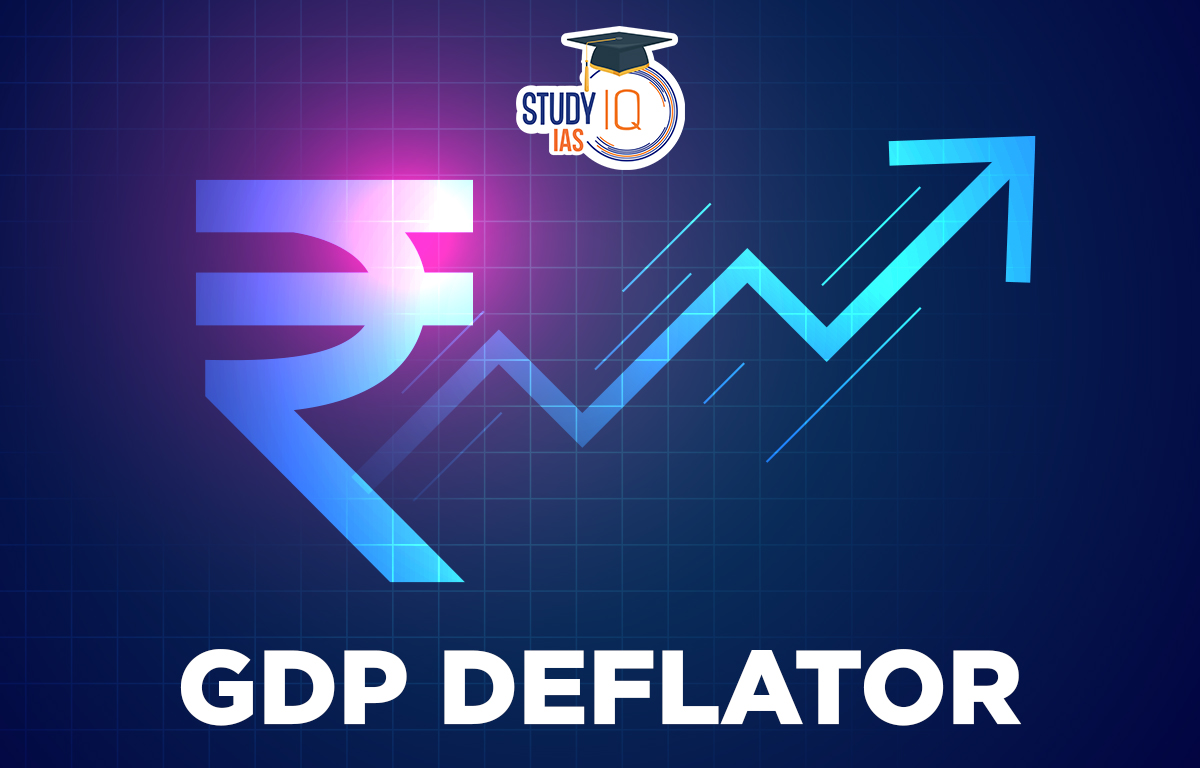Table of Contents
GDP Deflator
The GDP Deflator is an important economic indicator that helps to measure the changes in the price level of goods and services produced in an economy. It provides a way to adjust the nominal GDP (which is the GDP measured at current prices) to obtain the real GDP (which is the GDP measured at constant prices).
This adjustment is important because it helps to eliminate the effect of price changes on the measured output of an economy. By using the GDP Deflator, policymakers and economists can assess the level of inflation or deflation in an economy, and adjust their policies accordingly to maintain stable economic growth.
Read about: GDP of Indian States
GDP Deflator Formula
The GDP deflator is calculated by dividing Nominal GDP by Real GDP and then multiplying the result by 100. The resulting number represents the ratio of prices in the current year to prices in the base year, which is usually set to be 100.
The formula for calculating the GDP Deflator is:
GDP Deflator = (Nominal GDP / Real GDP) x 100
Where:
- Nominal GDP is the value of goods and services produced in an economy, measured at current market prices
- Real GDP is the value of goods and services produced in an economy, measured at constant prices (usually taken as the prices of a specific base year)
The resulting GDP deflator represents the ratio of the current price level of goods and services to the price level of the base year.
Read about: Basel Norms
GDP Deflator Base Year
The base year of the GDP deflator in India has been updated several times to reflect changes in the structure of the economy and to maintain its relevance. The most recent update was made in 2011-12 when the base year was changed from 2004-05.
The Advisory Committee on National Accounts Statistics (ACNAS), which is composed of professionals from the central and state governments, academia, the Reserve Bank of India (RBI), and other domain-specific specialists, provides direction for the base year revision of national accounts. Earlier, the ACNAS had suggested using 2017–18 as the new base year.
However, it was resolved at the ACNAS’s most recent conference on October 30, 2019, that 2017–18 should not be used as the new base year because it was not an ordinary year. Additionally, it was determined that 2020–21 may be used as the base year for adjustment rather than 2017–18 because of the lack of fresh statistics on consumption, employment, unincorporated manufacturing and services industries, etc.
Due to a lack of the necessary data sets for modification, 2018-19 and 2019-20 were also disqualified from consideration as base years at the aforementioned ACNAS meeting.
The change in the base year to 2011-12 was made to reflect changes in the structure of the Indian economy and to capture the impact of new industries and services that have emerged since the previous base year of 2004-05. This update has also brought the Indian GDP deflator in line with international standards and has improved the accuracy of inflation measurements in the Indian economy.
Read More: Types of Inflation
GDP Deflator Benefits
The GDP deflator is an important economic indicator that provides several benefits, including:
Measure of Inflation
The GDP deflator is a broad measure of inflation that includes the prices of all goods and services produced in an economy. It provides a comprehensive measure of price changes over time and is used by policymakers, economists, and investors to monitor changes in the overall level of prices in an economy.
Accurate Measurement of Real GDP
Nominal GDP measures the value of goods and services produced in an economy at current prices. However, changes in the value of GDP could be due to either changes in the quantity of goods and services produced or changes in prices. The GDP deflator adjusts nominal GDP to arrive at the real GDP, which provides a more accurate measure of changes in the quantity of goods and services produced in an economy.
International Comparison
The GDP deflator is used to compare the economic performance of different countries over time. Since it measures changes in the overall level of prices in an economy, it provides a more accurate comparison of economic performance across countries than nominal GDP.
Adjusting for Inflation
The GDP deflator is used to adjust for inflation when calculating other economic indicators, such as real wages, productivity, and debt-to-GDP ratios. This helps to provide a more accurate picture of economic performance over time.
Read about: Indian Financial System
GDP Deflator UPSC
The GDP deflator is an important topic for the UPSC exam as it is a key economic indicator used to measure changes in the price level of goods and services produced in an economy. The concept of GDP deflator is a part of the UPSC Syllabus for Economics and is relevant for both prelims and main examinations.
Understanding the calculation and interpretation of GDP deflator is important for aspirants who are preparing for the UPSC exam as it is a frequently asked topic in the exam. StudyIQ UPSC Online Coaching and UPSC Mock Test are helpful resources for aspirants to understand the concept of GDP deflator and practice questions related to it.
Read about: India’s GDP Growth Rate


 Goods and Services Tax (GST), Objectives...
Goods and Services Tax (GST), Objectives...
 World Oceans Day 2025, History, Theme, S...
World Oceans Day 2025, History, Theme, S...
 World Environment Day 2025, Theme, Histo...
World Environment Day 2025, Theme, Histo...





















